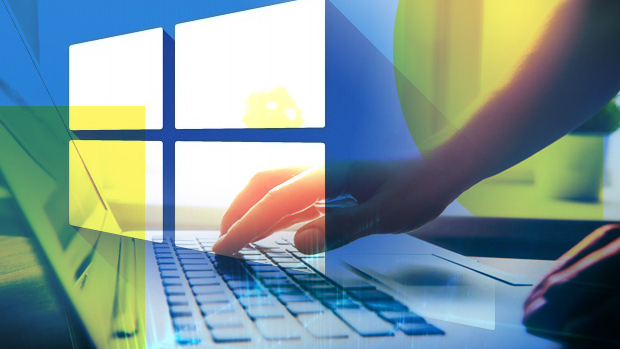Microsoft last week added another edition to its Windows 10 portfolio, introducing a variant of Windows 10 Pro aimed at high-end desktops, often tagged as workstations.
“Windows 10 Pro [for Workstations is] designed to meet the needs of our advanced users deploying their workstation PCs in demanding and mission-critical scenarios,” Klaus Diaconu, a manager in Microsoft’s Windows and devices group, wrote in a post to a company blog.
One analyst said the new Windows 10 would attract some customers, but called it “a very niche product.” And he wondered why Microsoft is adding another SKU (stock-keeping unit) to the line when it’s harped on the need to drive customers off Windows 7, even Windows 8.1, so that everyone is on 10.
“They want to shrink the number of versions, and expand the number of editions. That’s a contradiction,” said Michael Cherry of Directions on Microsoft. And questions abound, Cherry added, ticking off a slew of omissions ranging from pricing and licensing details to upgrade paths and servicing channels.
Microsoft quietly introduced Windows 10 Pro for Workstations, limiting the rollout to Diaconu’s blog post. That was in contrast to the introduction of Windows 10 S in early May, which warranted a presentation by the company’s top Windows executive, Terry Myerson.
Although Microsoft labeled the new edition as ‘Pro’ – a nod to the sole business-grade SKU sold at retail or preinstalled on new systems – the firm trumpeted the above-and-beyond-regular-Pro functionality and features as Windows Server-esque, saying it “comes with unique support for server grade PC hardware.”
Diaconu highlighted four areas that will distinguish the new edition from the standard Windows 10 Pro.
- Support for up to four processors – Windows 10 Pro maxes out at two – and as much as 6Tb of memory (maximum for Pro is 2Tb), as well as support for server-grade silicon such as Intel’s Xeon and AMD’s Opteron.
- Support for ReFS, (Resilient File System) whose most notable characteristic is its resiliency to data loss and corruption. ReFS, which debuted in Windows Server 2012, is currently suitable for data disks only; it cannot be used to store Windows’ system files.
- Support for NVDIMM-N (non-volatile dual in-line memory module), with the ‘N’ indicating a hybrid of traditional DRAM and Flash-based storage on the same physical module, typically a storage device. Because of the non-volatile component – meaning that the contents are maintained without electrical power – a storage device with NVDIMM-N can almost-instantly back up the contents of normal RAM when power is cut or interrupted.
- Support for faster network adaptors via SMB Direct, another Windows Server 2012 feature. One application, according to Microsoft: “For workloads such as Hyper-V or Microsoft SQL Server, this enables a remote file server to resemble local storage.”
Windows 10 Pro for Workstations is set to launch alongside the Windows 10 Fall Creators Update, aka 1709 in Microsoft’s yymm format. The update will probably begin reaching customers on 9 September.
Windows 10 Pro inconsistencies
While Microsoft has presented Windows 10 Pro for Workstations, the edition is plagued with several inconsistencies, according to Directions’ Cherry.
“Microsoft says they want it to be highly reliable, but at the same time, they don’t tell us which support channel it will use,” said Cherry, referring to the release tracks the company offers customers for feature upgrades. “This will run on hardware with non-volatile RAM and a high-speed network interface card, but [will Microsoft say it must be] updated every six months with the latest release? If so, that’s a contradiction.”
Windows 10 is distributed in three channels: Insider, a frequently-updated development build; Semi-Annual Channel, an every-six-months-comes-an-upgrade track; and Long-term Servicing Channel, or LTSC, available only to customers running the Windows 10 Enterprise edition. A version of Windows 10 assigned to the LSTC may be left alone, serviced only by security updates, for as many as 10 years.
Cherry made multiple points on the subject. First, machines running Windows 10 Pro cannot be assigned to LTSC, but will be force fed upgrades every six months. But Microsoft’s selling points for Windows 10 Pro for Workstations – reliability and stability – would seem to argue for the long-lived LTSC, not the constant churn of change required by the Semi-Annual Channel.
“I just don’t know how this will play out,” Cherry said.
He also wondered how systems running Windows 10 Pro for Workstations would mesh with Microsoft’s most advanced subscription services, including Windows Defender Advanced Threat Protection (ATP). The service is restricted to E5-level subscription plans, and requires Windows 10 Enterprise. “Can you put an E5 subscription on this thing?” Cherry asked.
But what stood out is a more basic incongruity in Microsoft’s thinking. “We’ve been hearing from Microsoft that there are too many versions of Windows, that they’re too broad and too hard to service and support,” he said of the company’s messaging.
Microsoft has been pushing customers, particularly commercial customers, toward Windows 10 and away from the stalwart Windows 7 (and to a lesser extent, Windows 8.1) more aggressively than in earlier cycles. Among the measures: unprecedented reductions of support for Windows 7 on new processors and the dispatch of decades-old patching practices.
“But then they’re expanding the number of editions,” Cherry said, giving a nod to Windows 10 S and the latest, Windows 10 Pro for Workstations. “They want to contract the number of versions but expand the number of editions.”
That made sense to Cherry on only one condition. “This [Windows 10 Pro for Workstations] is part of the continued monetisation of Windows,” he said.
IDG News Service








Subscribers 0
Fans 0
Followers 0
Followers